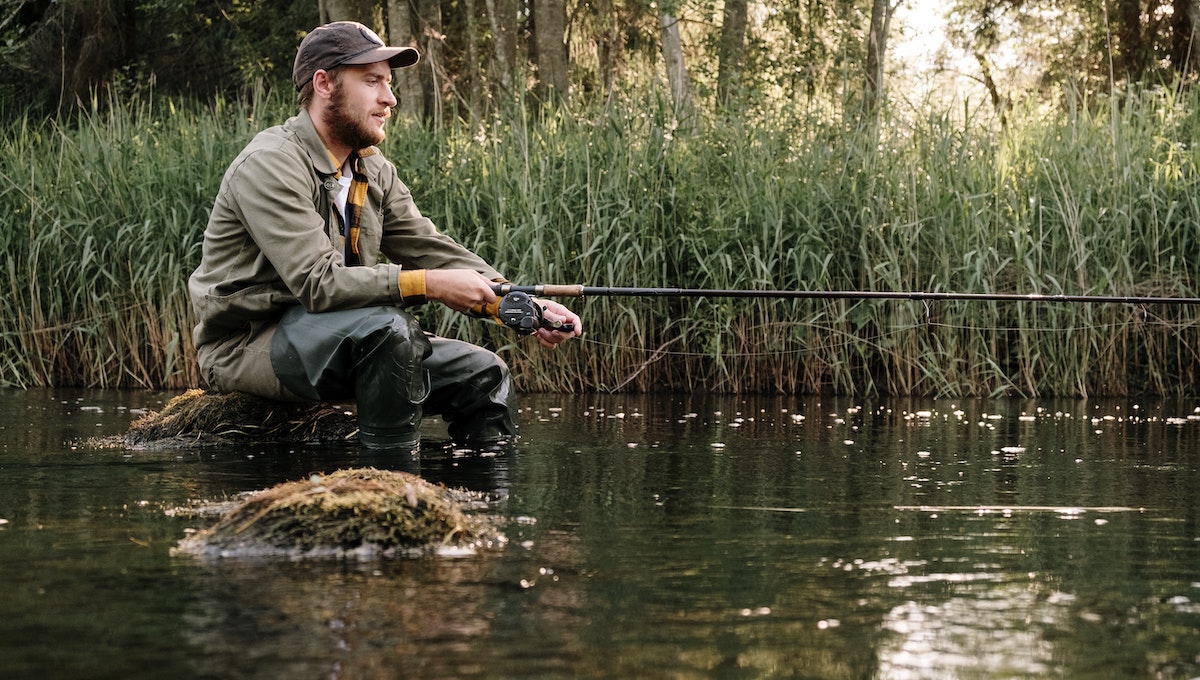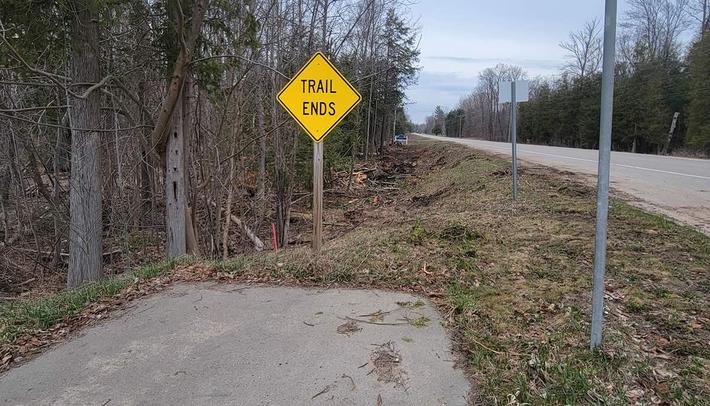
The Rivers of Our River Towns
The health and future of the Cheboygan, Manistee, and Au Sable rivers
By Ren Brabenec | July 1, 2023
According to the Department of Environment, Great Lakes, and Energy (EGLE), Michigan has over 76,000 miles of rivers and streams. To put that figure into perspective, if each river and stream in the Great Lakes State were connected, they’d be long enough to circle the Earth three times.
Michigan’s rivers have supplied habitats for plant and animal life throughout history, and the waterways created transportation and trade opportunities for Indigenous peoples and Euro-Americans alike. Most notably, rivers provided havens where humans could gather, establish settlements, and live out their days.
Our river towns look much different now than they did centuries ago; as human habitation changes, so too do the rivers. What do our beloved northern Michigan rivers look like now? What challenges do they face?
The Cheboygan River
Connecting Ecosystems Across the Tip of the Mitt
The Cheboygan River is just seven miles long, but it is one of the most important rivers in northern Michigan. Flowing from the north end of Mullet Lake to the Straits of Mackinac in Lake Huron, the Cheboygan River provided the foothold for the colonial settlement of northern Michigan in the 1800s, as the river’s current could be harnessed to power sawmills and float logs downstream.
Today, the river is best known as a way to access the popular Inland Waterway, a string of rivers and lakes stretching 40 miles across northern Michigan. Beyond its recreation opportunities, the Cheboygan River Watershed provides habitats for critical aquatic biodiversity in the Great Lakes Ecoregion. According to Tip of the Mitt Watershed Council, this watershed provides essential habitat to endangered aquatic species like the Michigan monkey-flower, Hungerford’s crawling water beetle, and the state-threatened lake sturgeon.
The Cheboygan River is also the terminus of a watershed system that spans more than 900,000 acres. Because of the river’s connection to thousands of miles of rivers, streams, and lakes, invasive species introduced to the Cheboygan River could access most of northern Michigan.
“Invasive species are a core concern of Tip of the Mitt Watershed Council,” says Water Resources Manager Marcella Domka. “We have to think about cascading effects from the introduction of invasive species into our waterways.”
When asked to expand on this concern, Domka introduced us to the term “eutrophication,” a serious biodiversity threat caused partly by invasive species.
“Zebra and quagga mussels are particularly worrying for their sheer population size,” says Domka. “They can survive in a range of aquatic environments and are filter-feeding organisms, meaning they consume nutrients within the water and thus make the water clearer. That might look nice to the observer, but clearer water allows for more sunlight penetration. When more sunlight gets in, it causes more plant growth in deeper water. Those new plants essentially take over ecosystems in the water and use up dissolved oxygen, effectively pushing out other lifeforms and causing habitat loss for already at-risk native species.”
Luckily, Tip of the Mitt Watershed Council is working to inform the public about invasive species. Education is a significant part of the organization’s activities, and the Council set up a mobile boat washing program to help boaters clean their boats and to inform them on invasive species prevention techniques.
Tip of the Mitt is also concerned about septic systems near lakes and rivers that may leach toxins into the waterways. In addition to advising area residents to have their septic systems inspected and pumped every two to five years, the Watershed Council also recruited students from Central Michigan University to collect water samples and test for contaminants. Once the samples are analyzed, the Council will draw up a report and make it available to the public. That report (and others like it) will then be used to draft policy on how Michigan landowners can do their part to keep waterways free of contaminants.
There’s a lot of work to be done to keep the Cheboygan River healthy so it can continue to be the gemstone feature of the town that shares its name, and some of those tasks are more than a little bit daunting.
“Invasive species and septic encroachment are just two issues,” says Domka. “There’s also climate change, which causes more severe and frequent storms and erosion which leads to more water runoff contaminated with phosphorus, nitrogen, sulfate, and chloride from farms, golf courses, and gardens.”
But there’s hope, too, because Michiganders know how valuable the state’s natural resources are. Domka finished her interview with us on a brighter note.
“For me, it’s the dedication of not only my team, but of our community members. From keeping boats clean to frequent river cleanups to volunteer river monitors and samplers to homeowners putting in greenbelts to prevent erosion, folks want to do their part to keep our rivers clean and healthy. If we all work together, we can do this. The residents of northern Michigan are invested in their environmental future. That gives me hope.”
The Manistee River
Coursing from the Depths of Glacial Sand Hills
Beginning in the deep glacial sand hills of southeastern Antrim County, the Manistee River is known for its remarkably stable flow of clean, cold water year-round, making it a popular river for fishing and canoeing. Throughout its 190 miles, the river drops from around 1,250 feet above sea level to 579 feet at the river’s terminus in Lake Michigan.
Like the Cheboygan River, the Manistee was once used for commercial logging, an activity that drastically altered the landscape between 1880 and 1910. Logging enterprises completely denuded habitat areas in and around the Manistee River, with silt runoff and logging debris impacting the river’s water quality and causing species loss.
Today, much of the river’s natural beauty has been restored, and the Manistee River Watershed continues to be a regionally important Lake Michigan tributary supporting a nationally recognized fishery. Not only is the health of the Manistee River essential to the local economy and way of life for residents, but the river’s natural beauty is a crucial draw for the region’s growing tourism industry.
According to the Manistee Conservation District, the Manistee River Watershed has good overall water quality, but it is degraded in some areas due to human activity both past and present. The primary source of pollution in the watershed is sediment, often caused by road/stream crossings and inadequately sized or improperly constructed culverts that cause sediment deposition in important in-stream habitat.
“Improper culvert sizes and poorly installed culverts can lead to excessive sedimentation in otherwise high quality cold-water habitats, as well as perched culverts that make fish passage improbable or impossible,” says Josh Shields, forester and wildlife biologist.
Shields spoke about many of the same issues that Marcella Domka did, highlighting the existence of broad, interconnected, and human-caused pollution and contamination concerns that affect the Manistee River and the Cheboygan River, even though the rivers are 187 miles apart. For example, both Shields and Domka referenced ongoing threats like nonpoint source pollution, residential development, PFAS (forever chemicals), septic systems, bank erosion, invasive species, and recreational impacts.
But just as hopeful attitudes permeate the thoughts and minds of those in Cheboygan, the same can be said for community members and volunteers in Manistee. “The Manistee Conservation District takes a lead role on projects such as aquatic macroinvertebrate sampling, lake monitoring, boat wash stations, and aquatic invasive species identification,” says Shields, noting that his organization receives enthusiastic support on the above projects from locals.
Other examples of improvements in the Manistee River Watershed include general conservation practices that landowners now implement, such as planting native trees, shrubs, and other vegetation along rivers and streams to improve the habitat and reduce erosion. Landowners have also placed valuable structures in streams, such as woody debris for fish habitat.
The Au Sable River
Providing the Best Trout Fishery East of the Rockies
Designated as a blue ribbon trout stream by the Michigan DNR, the Au Sable River runs approximately 138 miles through the northern Lower Peninsula. The river is a core attraction as it passes through the towns of Grayling and Mio before reaching its terminus in Lake Huron at the town of Oscoda.
A 23-mile portion of the river is primarily managed by the Huron Manistee National Forest (HMNF) service as part of the National Wild and Scenic Rivers System.
“The Wild and Scenic section of the Au Sable was chosen for designation due to its outstanding water quality, scenery, fishery, recreational values, and historical and cultural significance,” says Bradley Schumaker, assistant ranger for HMNF. “The Au Sable is a renowned cold water fishery that sees anglers from around the world come to [use] their skills and enjoy this fishery.”
Like the Manistee and Cheboygan Rivers, the Au Sable faces threats from invasive species. Didymo algae, also known as rock snot, is one that is being closely monitored, as it has been found in the Manistee and Boardman rivers. Not only is it unpleasant for humans—a thick, brownish algae with the texture of wet wool—but it can also cover river and stream bottoms and alter habitat and food sources for fish.
Didymo can travel easily on fishing gear, so HMNF Fish Biologist and Hydrologist Luca Adelfio recommends allowing your gear to dry thoroughly before transporting it between waterways and soaking waders and wading boots in a 2 percent bleach solution or a 5 percent dish soap solution.
But the news isn’t all doom and didymo gloom. Good changes are happening, too.
“Anglers of the Au Sable have planted 100 cedar trees along the National Wild and Scenic River section in the last two years to help preserve this iconic tree species and to provide future shade for trout, a cold water dependent fish,” Adelfio tells us. “This year, the cedar planting work day is scheduled for National Public Lands Day, Sept. 23. Anglers of the Au Sable also organizes a river cleanup each fall to remove garbage from the river—Sept. 9 this year.”
The HMNF team also does a river cleanup of their own. A date hasn’t been set just yet, but interested folks who want to volunteer for the float-and-clean day can reach out to the Huron Shores ranger station in late July to find out what dates are being set aside for the cleanup.
Adelfio adds that we can all do our part in keeping the Au Sable clean and beautiful for generations to come.
“The National Scenic section of the Au Sable is one of the most popular rivers in Michigan,” Adelfio says. “Packing out your trash, camping only in designated areas, and utilizing outhouses at access points are important to protect the quality of visitor experience for those who come after you.”
To learn more about critical conservation work in northern Michigan’s rivers and what residents and visitors alike can do to keep the rivers healthy and clean, visit: Tip of the Mitt Watershed Council at watershedcouncil.org; Manistee Conservation District at manisteecd2.org; and Huron-Manistee National Forest at fs.usda.gov/recarea/hmnf/recarea/?recid=23980.
Photo of a fisherman in the Au Sable River courtesy of Michigan State University.
Trending

Walking in an Artsy Wonderland
Michigan Legacy Art Park is hosting the “Raindrops” artwork created by Dewey Blocksma and Patricia Innis at th... Read More >>
Seven Takeaways from Local Real Estate Agents for the Spring/Summer Market
The last few years in local real estate have been akin to what one local agent described as the “wild west,” w... Read More >>
Blazing the Boyne City to Charlevoix Trail
We’re getting ever closer to an interconnected northern Michigan thanks to ongoing work on the Boyne City to Charlev... Read More >>


